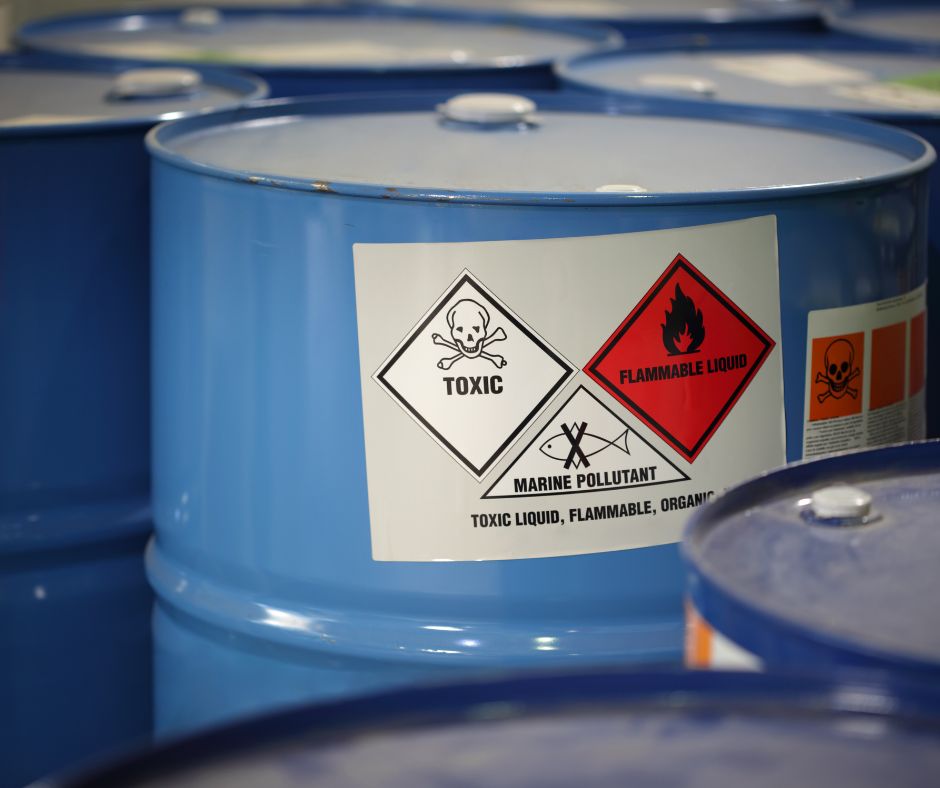The effects of an explosion or a fire in the workplace can be devastating in terms of lives lost, injuries, significant damage to property and the environment, and to business continuity.
Fires and explosive atmospheres can be caused by work which involves storage, use or creation of flammable substances including gases, mists, or vapours or by combustible dusts. If there is enough of a substance, mixed with air, then all it needs is a source of ignition to cause an explosion.
To help prevent accidental fires or explosions, you need to identify what substances, materials, processes have the potential to cause such an event and the people who may be at risk/harmed.
Once you have identified the risks, you should consider what measures are needed to reduce or remove the risk of people being harmed. This will include measures to prevent these incidents happening in the first place, as well as precautions that will protect people from harm if there is a fire or explosion.
- Think about the risks of fire and explosions from the substances you use or create in your business and consider how you might remove or reduce the risks
- Use supplier safety data sheets as a source of information about which substances might be flammable
- Consider reducing the amount of flammable/explosive substances you store on site
- Keep sources of ignition (for example naked flames, sparks) and substances that burn (for example vapour, dusts) apart
- Dispose of flammable/explosive substances safely
- Maintain good housekeeping, for example avoid build-up of rubbish, dust or grease that could start a fire or make one worse
- Review your risk assessment regularly
The hazards
Many substances found in the workplace can cause fires or explosions. These range from the obvious, for example petrol, cellulose paint thinners, welding gases and other flammable chemicals. Less obvious sources include engine oil, grease, dusts from wood, flour and sugar.
Flammable Liquids
Liquids (such as petrol and other fuels) and solvents in industrial products (such as paint, ink, adhesives and cleaning fluids) give off flammable vapour which, when mixed with air, can ignite or explode.
Extremely flammable
- Liquids which have a flashpoint lower than 0°C and a boiling point (or, in the case of a boiling range, the initial boiling point) lower than or equal to 35°C.
Highly flammable
- Liquids which have a flashpoint below 21°C but which are not extremely flammable.
Flammable
- Liquids which have a flashpoint equal to or greater than 21°C and less than or equal to 55°C and which support combustion when tested in the prescribed manner at 55°C.
Dusts
Dusts which can form explosive atmospheres are also classed as dangerous substances. They can be produced from many everyday materials such as coal, wood, flour, grain, sugar, certain metals and synthetic organic chemicals.
Dusts are found in many industries such as food/animal feed, chemicals, woodworking, rubber and plastic processing and metal powders. They may be raw materials, intermediates, finished or waste products. A cloud of combustible dust in the air can explode violently if there is a source of ignition (e.g. naked flame, sparks).
Gases
Gases, such as liquefied petroleum gas (LPG), hydrogen or other flammable industrial gases, are usually stored under pressure in cylinders or bulk containers. Uncontrolled releases can readily ignite or cause the cylinder to become a missile. Methane (mains gas) is also a flammable gas which can cause explosions.
Solids
Solids include materials such as plastic foam, packaging and textiles can burn fiercely and give off dense black smoke, sometimes poisonous.
Welding gases
The flammable gases and oxygen used as a fuel for hot work and flame cutting can give rise to fire and explosion risks on their own without involvement of any other dangerous or combustible substances.
Chemical substances
Many chemical substances can give rise to harmful heat and pressure effects because they are unstable or because they can react violently with other materials. Chemicals need to be stored correctly and sufficient information obtained to ensure that correct process controls can be used to prevent dangerous exothermic runaway reactions.
iProtectU provides inspection forms and allows a user to create, edit and document a risk assessment covering explosion hazards in the workplace.
iProtectU brings together the key resources and knowledge of three companies specialising in EHS software development, health and safety, business intelligence and data analytics.
Our vision is to provide fully integrated, cost effective and simple to use health and safety software tools that enable our clients to engage their entire team.








